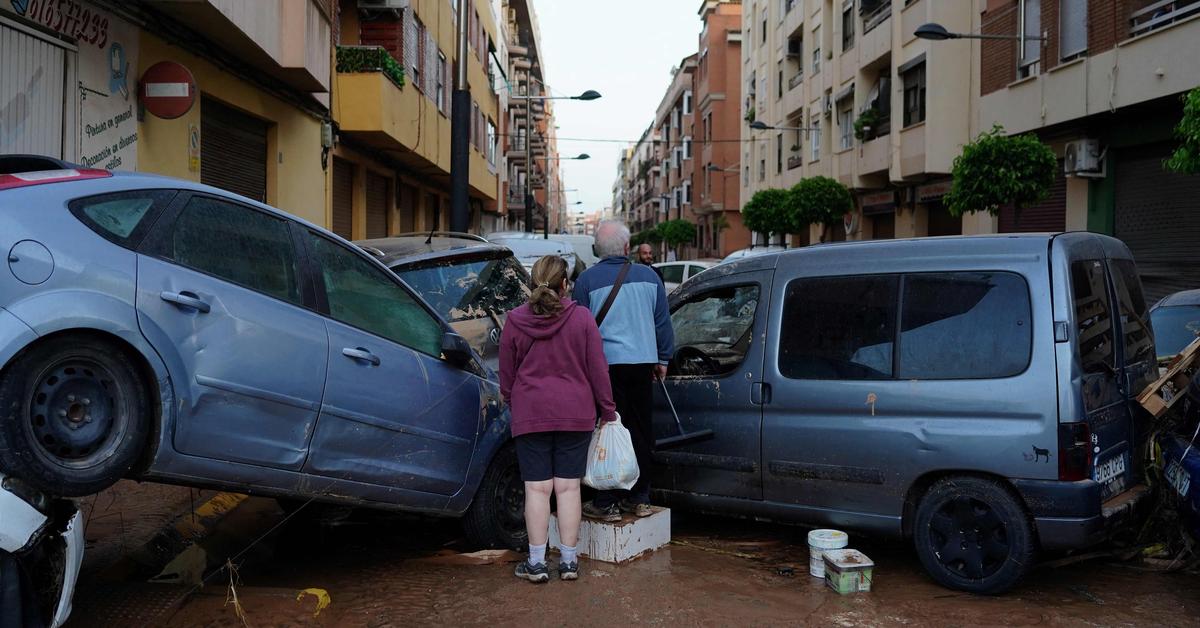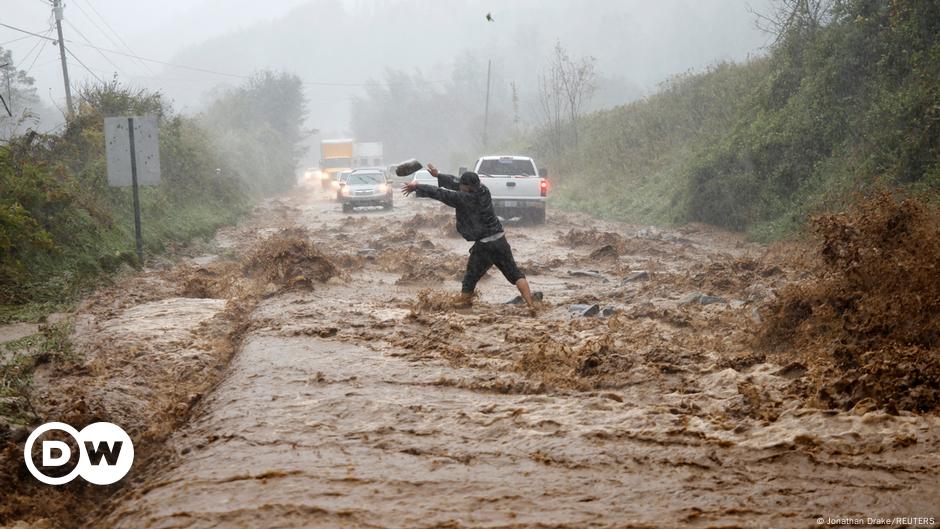Devastating Hurricane Helena has left a trail of destruction in several states across the southeastern United States. According to the latest information from the authorities, at least 44 people were killed. The state of South Carolina alone has accounted for 20 deaths, including two firefighters. Also, 15 people died in Georgia and 7 in Florida. More deaths occurred in North Carolina and Virginia. According to a representative of the disaster management agency FEMA, “more than 600 rescue operations” were carried out.
The National Hurricane Center (NHC) declared “historic and catastrophic flooding” and warned of flash flooding in Georgia's largest city, Atlanta, as well as South Carolina and North Carolina. Up to 30 centimeters of rain was forecast for the Appalachian Mountains.
Dramatic recovery of the hospital roof
Heavy flooding also occurred in the small town of Erwin, Tennessee. Here more than 50 patients and staff climbed down on the roof of the hospital to save themselves from the flood. With the help of a helicopter, the police and emergency services were able to rescue people, while the mass of water beneath them washed away everything. All have been brought in safely, said Senator Bill Hagerty on texting service X.
In neighboring Virginia, Governor Glenn Young warned of further dangers in a video message. The storm is “not over yet.” Some Atlanta residents had to scoop water out of ground-floor windows with buckets, while near Tampa, Florida, boats were stranded in yards. The storm's destruction stretches hundreds of kilometers inland from Florida in the south.
The storm made landfall south of Tallahassee, Florida, on Thursday evening with sustained winds of 225 kilometers per hour, making it an “extremely dangerous” category four hurricane. According to Governor Ron DeSantis, sea levels rose as much as six meters along the Florida coast in some places. According to him, the effects of Helen were worse than any other hurricanes in the past 13 months. Meteorologists said Helen was unusually large for a hurricane from the Gulf of Mexico.
Severe flooding inland
As it moved northward, Helen weakened and was downgraded to a tropical storm with maximum sustained winds of 55 kilometers per hour. Nevertheless, it had even more serious consequences: many streets, houses and shops were flooded or destroyed. More than 4.2 million homes and businesses were temporarily without power in the ten affected states, from Florida to Ohio, according to the website Poweroutage.us.
U.S. Vice President Kamala Harris warned: “The storm is still dangerous and dangerous, as it has claimed lives and the risk of flooding remains high.” He and President Joe Biden “will continue to monitor the situation closely.” According to Harris, the government mobilized 1,500 employees to support the affected communities.
Violent storms caused by global warming
Climate change is causing tropical cyclones to become more violent and strengthen faster, experts say. This is due to the warming of the oceans: hurricanes are caused by the evaporation of water at the ocean surface, and evaporation increases as temperatures rise. As the Atlantic has been warmer than average this year, the US National Oceanic and Atmospheric Administration (NOAA) has warned of an “exceptional” hurricane season this year. Hurricane season in the Atlantic begins on June 1st and lasts until November 30th.
Two years ago, Hurricane Ian caused massive damage in Florida, killing more than 100 people. By that time, the center of the storm had moved to the densely populated areas in the south-west of the state and lashed coastal towns with winds of up to 240 kilometers per hour.
Hurricane John hits Mexico
Neighboring Mexico is also still suffering from heavy rains following the hurricane. Hurricane John had already passed Mexico on Tuesday. The cyclone temporarily lost strength, but picked up speed again. On Friday, “John” was moving along the coast of Mexico at speeds of about 100 kilometers per hour, the US National Hurricane Center said. It was feared that it would trigger “flash floods and catastrophic landslides”.
The vacation resort of Acapulco, popular with tourists, recently flooded again after “John” moved across southern Mexico. Acapulco Mayor Abelina López Rodríguez said that for five days, the city was hit with “historic amounts of rain”.
At least five people died in the hurricane, according to President Andrés Manuel López Obrador. Local TV station Milenio reported 13 deaths, including five children. According to López Obrador, about 25,000 army and national guard troops were stationed in the region. Accordingly, at least 1,200 people were accommodated in emergency shelters.
kle/yy (afp, rtr, dpa)

“Amateur coffee fan. Travel guru. Subtly charming zombie maven. Incurable reader. Web fanatic.”







More Stories
Martin Schulz: “I want more courage for the United States of Europe”
US reports first case of H5N1 bird flu virus in pigs
Polestar fears US sales ban